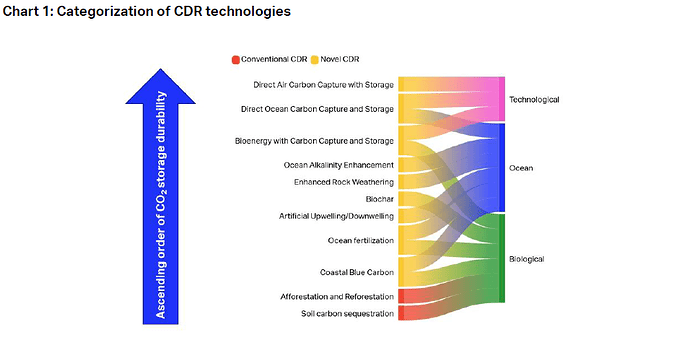In a recently published Policy Analysis, ‘Considering Durability in Carbon Dioxide Removal Strategies for Climate Change Mitigation’, Charlotte Streck, Sara Minoli, Stephanie Roe, Christian Barry, Matthew Brander, Solene Chiquier, Garrett Cullity, Peter Ellis, Jason Funk, Matthew J. Gidden, Matthias Honegger, Tracy Johns, Deborah Lawrence, Eve Tamme and Daniel Zarin have elaborated upon a number of aspects of CDR durability and provided guidance to policymakers.
Key takeaways:
- The global temperature can only be aligned with the goals of the Paris Agreement if the speed and scale of CDR activities increase imminently.
- Engagement in CDR can only translate into progress towards the achievement of Paris Agreement objectives if: i) obstacles that stand in the way of immediate CDR deployment are not insurmountable, ii) while deploying CDR the achievement of climate objectives is coupled with environmental and social improvements to the greatest extent possible without making compromises in one realm for facilitating progress in another area and iii) stored CO2 can remain stored during a certain timeframe through the minimization of the risk of leakage. These conditions have been portrayed as the requirements of ‘durability, readiness and feasibility and sustainability and synergistic policy goals’.
- There is no global consensus regarding the prerequisites a CDR method needs to meet in order to be deemed as ‘permanent’ or ‘durable’.
- The durability of a given CDR method can be contextualized in various ways depending on whether it is used to meet immediate or prospective goals and the means that need to be employed to increase the sequestration duration to the greatest extent possible while greatly decreasing the possibility of leakage.
- There is no CDR method that not only presently meets all three requirements for aligning with the goals of the Paris Agreement, namely ‘durability, readiness and feasibility and sustainability and synergistic policy goals’, but can also fulfill them during the next centuries.
- Novel CDR methods that are employed by having recourse to engineering usually result in the sequestration of carbon for a longer period and with lower risk of leakage compared to traditional methods relying on natural carbon sinks.
Source: Carbon Dioxide Removal (CDR) Technologies: An Overview of the Different Methods for Capturing and Storing Carbon Dioxide from the Atmosphere, IATA
- However, traditional CDR methods relying on natural sinks offer other advantages.
- Within this context, the small-scale employment of such methods followed by their large-scale expansion can take place in an imminent manner for two reasons. First, there is diffused knowledge concerning the steps that need to be taken for their implementation. Second, they can be deployed at a low cost compared to novel CDR methods.
- In addition, improving the conditions of the environment and humans while spurring progress towards the achievement of the temperature goals of the Paris Agreement, traditional CDR methods facilitate the efforts underway for the realization of sustainable development goals.
- Therefore, a comprehensive evaluation of all the positive and detrimental impacts of a wide range of CDR methods would trigger policy-makers to refrain from preferring non-conventional methods over their traditional counterparts at all instances.
- This assessment, in turn, would lead to the simultaneous employment of diverse CDR methods to tackle different risks while increasing the amount of CO2 that is removed through engagement in CDR.
- Nonetheless, financial resources that are allocated to CDR cannot be used to backtrack on the commitments that have been made to reduce emissions.
Read the paper here: https://www.tandfonline.com/doi/full/10.1080/14693062.2025.2501267#references-Section
